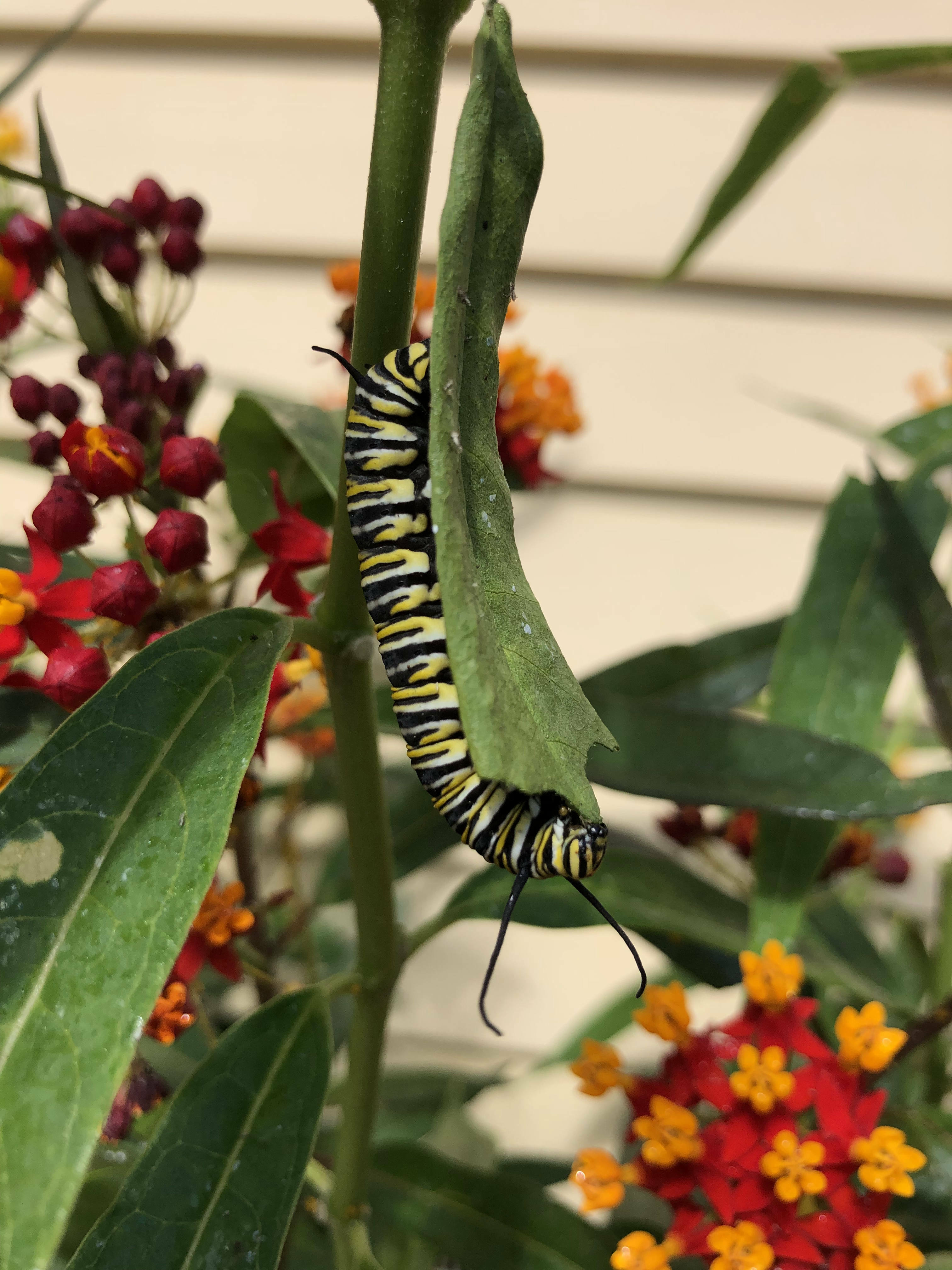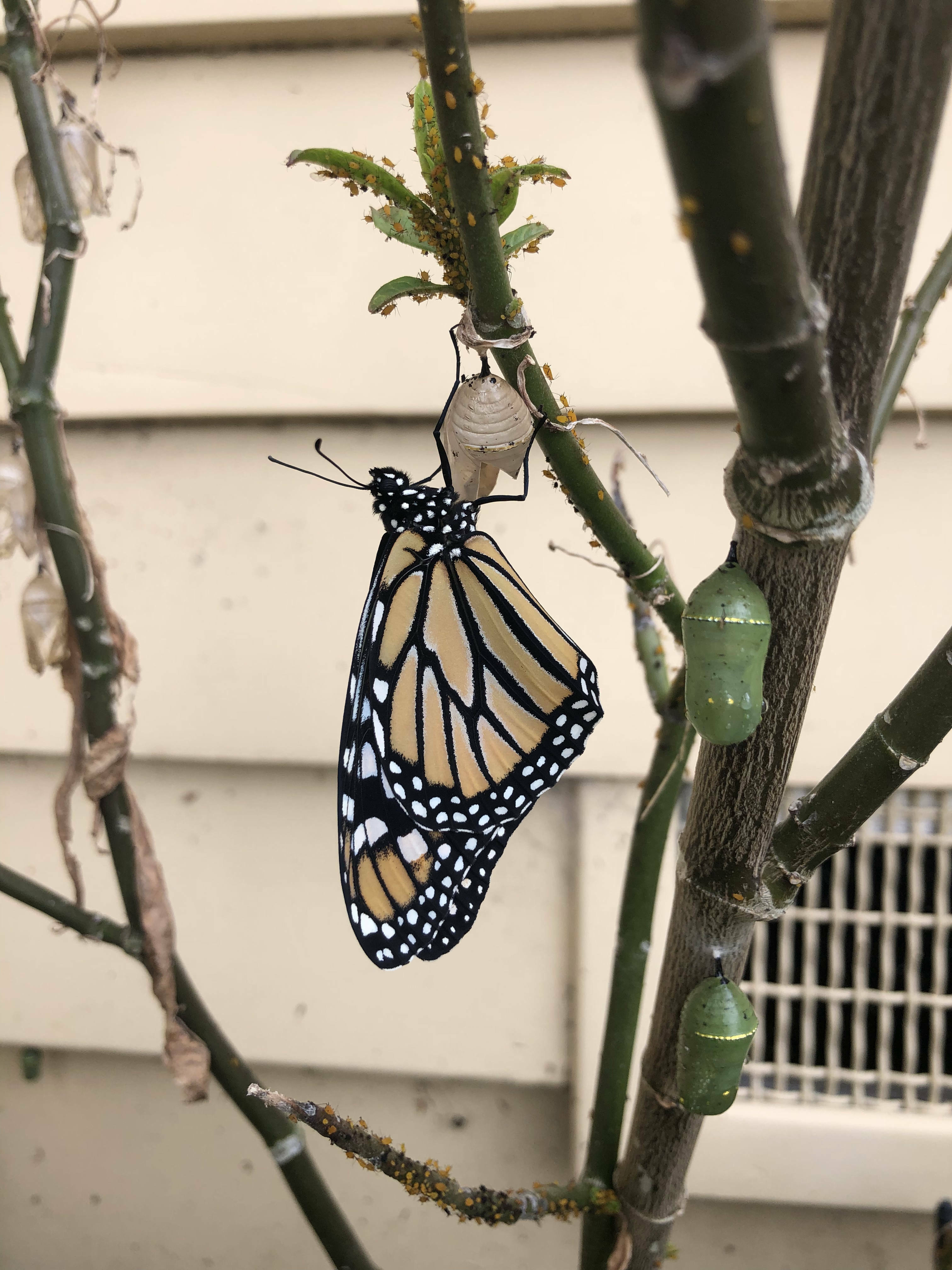Ecology
insect of the month: monarch butterflies
The monarch butterfly (Danaus plexippus) is an iconic insect species all around the world. The monarch is well known because of its presence in many different countries and its striking colourful appearance. This butterfly has captured the imagination for a long time and is often used as an example to demonstrate insect life cycles. Read on to learn more about these incredible insects!
Fun Facts
- While they originated in other parts of the world, monarch butterflies are considered native to Aotearoa New Zealand because they got here by flying or being blown over, without any help from humans.
- They are from the family Nymphalidae, which is the largest family of butterflies.
- Male and female monarchs look slightly different, males have some narrower black veins on their wings.
- Their name is thought to have come from King William III who was also the “Prince of Orange”. Because they were orange, they were called monarchs.
- In North America, monarchs migrate massive distances south every year in late summer or autumn.
- They usually use milkweed plants as hosts for caterpillars to eat, grow, and pupate on. In Aotearoa New Zealand, their main host is the swan plant.
Bright Colours
Monarchs are distinctive because of their large size (their wingspan can be between 8.9 and 10.2 cm!) and their striking colours. Adult monarch butterflies are bright orange with black veins running across their wings, making them stand out wherever you see them. Monarch caterpillars are also brightly coloured, with yellow, white, and black stripes. So, why are they so brightly coloured? Often, animals are coloured to camouflage or blend in with their surroundings in order to hide from predators. However, some animals stand out on purpose, like the monarch butterfly. This is known as warning colouration or “aposematism”, which is meant to let potential predators know that they taste bad and are sometimes even toxic!

Life Cycle
Monarch butterflies undergo complete metamorphosis to become adults, and it all happens very quickly, as they might only live for a total of 60 days. Monarchs have four life stages: egg, caterpillar (larva), chrysalis (pupa), and adult. Butterflies lay eggs on the underside of leaves which will hatch within 4-8 days. Once hatched, the caterpillar gets to work eating and growing quickly, moulting 5 times to keep up with its growth. The final moult is when the caterpillar pupates, forming a chrysalis that it will stay in for around 10 days. When it emerges, the caterpillar is now an adult butterfly, and it will look like a completely new insect!

Why are they important?
Insects all around the world are under threat from habitat loss, invasive species, insecticide use, and climate change. Insects are a hugely important part of almost all ecosystems and we rely on them to do all sorts of jobs like maintaining soils and pollinating flowers. Despite how widespread they seem to be, monarch butterflies also face threats, especially in the North American populations. Monarchs are also important pollinators, visiting many flowers and spreading pollen between them.
The best way to see monarch butterflies is to plant swan plants, or keep an eye on a neighbour’s! Observing monarchs on a swan plant you can often see every stage of their life cycle. Otherwise, adults can be seen visiting all types of flowers in your garden or here in Cornwall Park.
